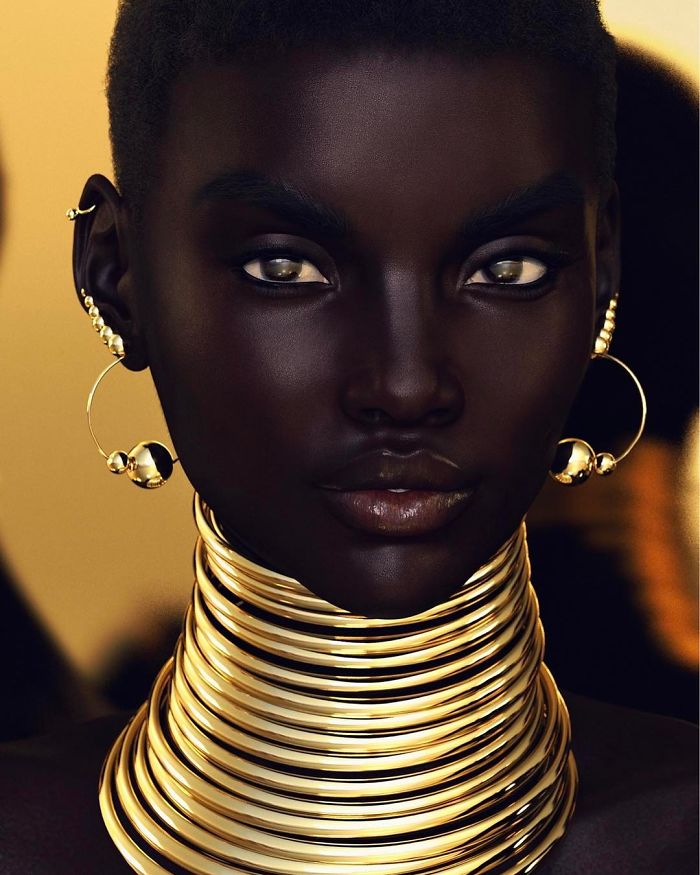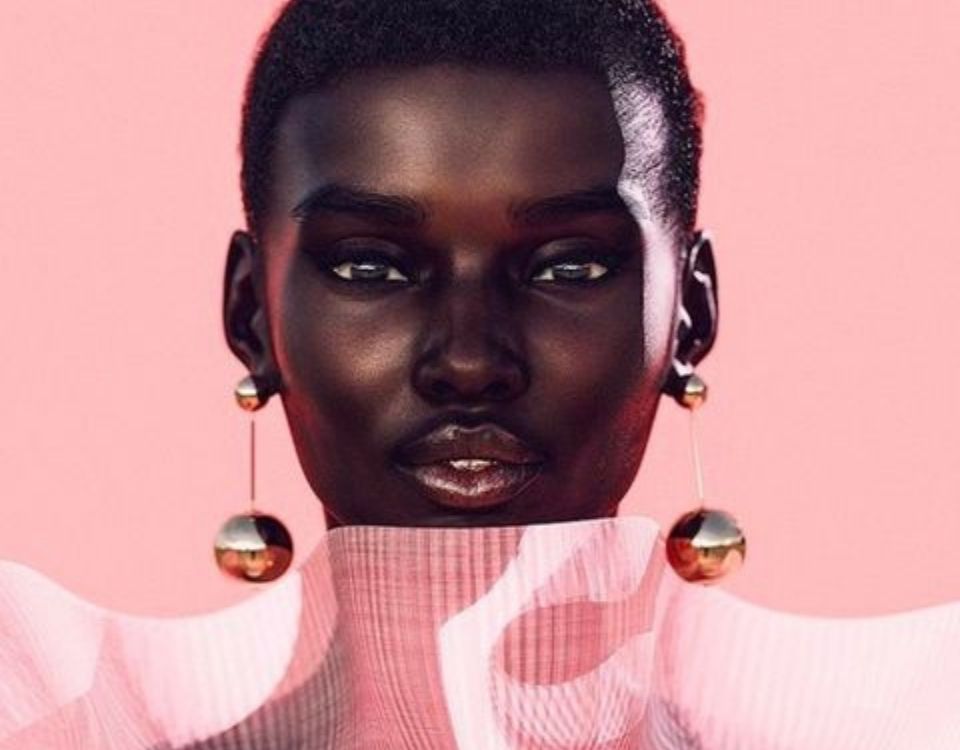We are racing towards a future where our world will largely depend on digital goods and even digital people. Shudu Gram is a testament to the race towards the future where we’ll interact with digital humans. She may change the way we interact with fashion altogether. Read on to explore the life of this digital supermodel and her impact on the fashion industry.

Birth and creation

The digital supermodel is a creation of fashion photographer Cameron-James Wilson. She came to be in April 2017 and bears striking resemblance to “Princess of South Africa Barbie Doll”. If you go to her Instagram @shudugram, you will see her in iindzila, which are the neck rings famous in Ndebele, South Africa. Here are some of Shudu’s shots from her Instagram.
When she first appeared on Instagram, she set the platform into a frenzy with hashtags such as #melanin, #blackisbeautiful, and #blackgirlsrock trending all over. She soon garnered a massive following on the platform and is celebrated for her symmetrical features and glistening black skin that seems out worldly.
How was she created?
Shudu Gram is a computer-generated model much like the characters you see in your famous animated movies. While Gram is the world’s first digital supermodel, she’s not the first CGI-based model to be crowned a social media influencer. Before her, Miquela Sousa (Brazilian-American) was the face of many different brands. She promoted merchandise and social causes. Today, she has over a million followers on Instagram. But that’s not it, she’s also a singer. The “Not Mine” by Lil Miquela has over 1.5 million hits on Spotify.

For a long time, Miquela wasn’t known to be a digital model. It has just recently come to the surface that she was a creation of a Los-Angeles based company called Brud. While Shudu Gram is the first supermodel created using CGI, she is not the last. Wilson used to fix barbie doll faces and style them like real-life supermodels when he had the idea to create Shudu. The experience with Barbie dolls helped Wilson gather the necessary artistic skills he needed to create something as stunning and realistic as Shudu.
He used Daz 3D, a free special-effects program famous among special-effect artists and producers. The program comes with an asset store that allows users to download characters and objects for virtual reality. He used to work with Blender creating objects like cups of coffee before he moved to Daz 3D and started experimenting with humanoids.
Wilson drew his inspiration from real-life supermodels like Iman “beautiful deep sockets”, but his biggest inspiration for Shudu came from Princess of South Africa Barbie Doll. Shudu, like the Barbie Doll, wears neck rings.

After Shudu started to appear on her Instagram account, she soon won the hearts of a lot of people including A-list celebrities such as Tyra Banks, Alicia Keys, Naomi Campbell, and Micheal B. Jordan.
The controversy surrounding Shudu Gram

She was created by a 28-year-old white male, which has sparked a bit of controversy. According to Wilson, “There’s a big kind of movement with dark skin, so she represents them and is inspired by them.” While people may frown upon a white man creating a dark-skinned woman as his artwork, Wilson considers Shudu purely a piece of art in an objective sense, separated from any human judgment. A lot of people forget that Shudu is not a real person but someone’s creation.
“I wanted something that was coming from a place of pure creativity,” he told the New Yorker magazine, “I wanted to focus on the art rather than the money.” Eric Lott, An American Historian, has compared Shudu to blackface minstrels. These minstrels originated in the antebellum period and entertained white audiences, allowing them to indulge in their fascination for blackness without having to interact with black people.
Wilson, however, did not intend to participate in this racial expropriation. He told the New Yorker, “I honestly think that those who have taken the time to speak to me about my motivations understand that it wasn’t this big scheme to profit off of someone.” He further added that he happily invites debate and discussion regarding his creation. Those who applaud Shudu’s presence compare her to virtual avatars that users can create on their own in games like Second Life and The Sims.
What does this digital supermodel for the fashion industry?
It seems that we will soon have a diverse range of digital supermodels touting designer clothes on social media. If the models look so life-like, will they redefine the purpose of real-life influencers? Would you be comfortable watching digital fashion models showcase your favorite designer clothes than the real supermodels? Let us know what you think in the comment section below.
Next discover digital clothing and its influence on fashion industry.
